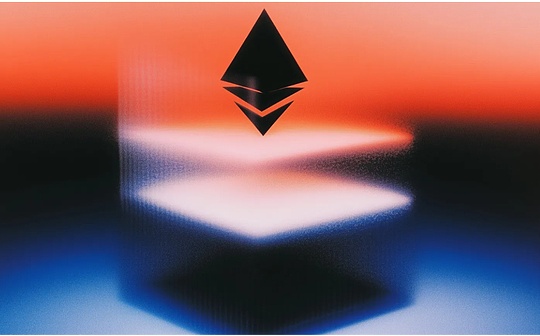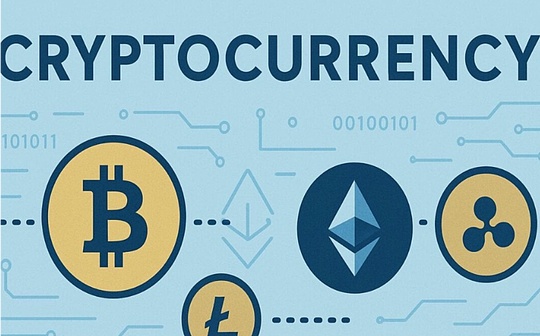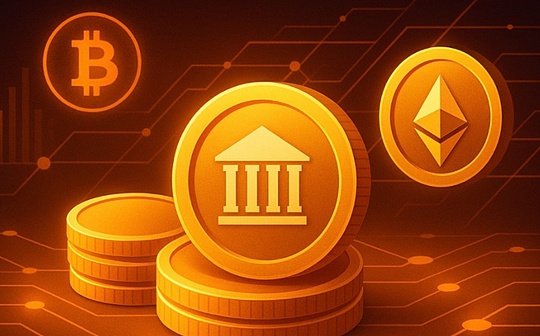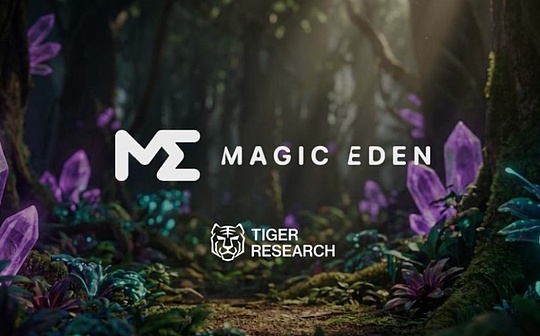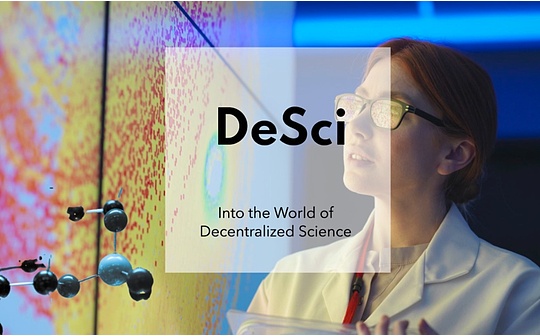
Written by: Ac-Core, YBB Capital Researcher
TL;DR
-
The birth of DeSci hotspots mainly stems from Binance Labs’ investment in BIO Protocol, CZ’s new directions involved biotech adoption, CZ and Vitalik discussed DeSci, and a16z led the investment in the DeSci project AmionChain;
-
If DeSci is regarded as a Meme, its fundamentals need to be stronger narrative and character stand-up compared to Memes in different directions such as zoos, AI, and art, and also have more potential to break the circle;
-
In a practical sense, the current economic volume that DeSci can provide is not enough to support the expenditure of scientific research funds. DeSci is still in the early stage of the “market value dream”, and hot speculation is the urgent need.
1. Background
1.1 What is DeSci
More official explanation, DeSci (Decentralized Science) is decentralized science, aiming to build a public infrastructure for scientific research through fair and equal use of Web3 technology. Its focus is on solving reviews, scientific research funding, intellectual property management, and data transparency and review.mechanism and other issues.
In a more vernacular explanation, DeSci gives the pure speculative nature of the currency circle to the zero speculative nature of scientific research.But DeSci is not a new concept that has only emerged this year. VitaDAO, which focuses on funding and promoting early longevity scientific research, was established as early as 2021 and has even received investment from the world-renowned pharmaceutical company Pfizer.But DeSci has always been developing in a calm and has not received market attention. It was not until recently that Binance Labs announced its investment in BIO Protocol, and CZ and Vitalik participated in the DeSci conference, which brought the track back into the public eye.
1.2 The creation of hot spots
-
Binance Labs exclusively invests in BIO Protocol:
BIO Protocol can be seen as a crowdfunding platform that raises funds for scientific projects, obtains funds through token sales and uses this funds to support and advance the development of biotech projects.Intellectual property exists in the form of IPT (intellectual property token) of the Molecule protocol and is shared by participants.
The proceeds from BioDAO through intellectual property rights and product sales will be returned to BioDAO’s vault to fund next-generation R&D projects.”BIO can be regarded as the Y Combinator of on-chain science,” Binance Labs said.Currently, the total value of the 100 startups under Y Combinator with the highest valuation or market value has exceeded US$100 billion, including well-known companies such as Airbnb, Coinbase, Stripe, and Reddit.
-
CZ’s new direction speech includes biotech and discussions with Vitalik DeSci:
In his first speech after his release from prison in Dubai Binance Blockchain Week 2024, CZ expressed its relationship with artificial intelligence and biotech in this original sentence. “Now I mainly do two things: one is Google Academy, and the otherOne thing is investment. Investment is mainly concentrated in the three fields of blockchain, artificial intelligence and biotechnology. “CZ then attended the DeSci Day event held by Binance in Bangkok and discussed DeSci with Vitalik.This move has sparked heated discussions in the market, and the prices of various DeSci projects have risen sharply.
-
a16z lead the DeSci project AmionChain:
Recently, AminoChain announced that it has received a US$5 million seed round of financing led by a16z, and combined with the investments from private funds such as Cercano, the total cumulative financing amount has reached US$7.8 million.Its vision is to build a decentralized “Biobank” on L2, allowing researchers to easily find and access samples while patients retain control and receive compensation for using their data.

Source: X (@BinanceLabs)
2. DeSci’s real needs and real use cases
2.1 Reasonable DeSci: Funding Requirements for Scientific Research
According to the 2024 report of the National Science Foundation (NSF) and the National Center for Science and Engineering Statistics (NCSES), the United States’ scientific research expenditure in 2023 is estimated to be US$710 billion, and its R&D expenditure in 2022 is close to US$700 billion., of which corporate R&D dominates, with about 78% of R&D investments coming from the private sector, especially in areas such as information technology and pharmaceuticals.
In 2021, except for China and the United States, other countries that performed the best in scientific research expenditure were Japan ($177 billion), Germany ($154 billion) and South Korea ($120 billion).In 2021, the U.S. R&D expenditure is equivalent to 3.5% of GDP, with the R&D intensity of Israel and South Korea exceeding 4%, Taiwan, Japan and Germany between 3% and 4%, and the United Kingdom and China above 2%.In 2022, the investment in R&D of higher education in the United States ranked second, second only to business.The institutions’ funding for life science research is the highest in science and engineering, at $42 billion (44% of the total), mainly from the Department of Health and Human Services (see data in Extended Link 1).

Source: See Extended Link 1
China’s R&D expenditure exceeded 3.3 trillion yuan (about 458.5 billion US dollars) in 2023, an increase of 8.1% year-on-year.Among them, investment in basic research was RMB 221.2 billion, an increase of 9.3%.Compared with the past, China has maintained a high growth rate in recent years, especially in high-tech and basic scientific research, which shows the driving force of the strategy of building a strong country in science and technology (see Extended Link 2 for data).
Comparison of growth in scientific research expenditure: China’s scientific research funding has grown rapidly, especially in the field of basic research, which shows the country’s determination to innovate scientific and technological innovation and its emphasis on high-end science and technology fields.Although the United States has a higher absolute amount, its growth rate is relatively stable, and it focuses on areas with long-term technological cutting-edge advantages.
Judging from the practical application of DeSci, it is currently more at the narrative stage of Meme, and it is difficult to directly promote the development of science and technology.Whether it is donations driven by narrative empathy or market flows caused by speculative transactions, the existing economic volume is still far from enough to support the huge expenditures required for scientific research.Therefore, DeSci is still in the early stages of the ‘market value dream’.If DeSci wants to truly implement it in the future, in addition to meeting regulatory needs, it also needs to receive continuous support from strong influential figures.
2.2 DeSci’s real-life academic financial case: South Korea’s LK-99 room temperature superconducting event

Source: Taj Quantum – American Taiji Quantum Official Website
2023 is known as the “first year of room temperature superconducting”, which is mainly due to several studies claiming to have discovered room temperature superconductors, which has attracted widespread attention from the global scientific community.However, as the follow-up investigation deepened, these findings proved to be serious problems and even caused academic scandals.
The incident began. Langa Dias, a physicist at the University of Rochester in New York, published a paper in the journal Nature, claiming to have discovered a material that can achieve superconductivity at room temperature.This discovery was initially seen as a major breakthrough, as the emergence of room temperature superconductors could revolutionize technological developments in the fields of energy transmission, medical equipment, and electronic components.Generally, superconductors need to operate at very low temperatures (below -196 degrees Celsius), and superconductors that can operate at room temperature have always been the goal pursued by the scientific community.However, Diaz’s research has been questioned a lot since its release, especially since his academic reputation was controversial in 2020 for similar research.
Back in 2020, Diaz became popular for a paper on room temperature superconductors, but the paper was withdrawn by Nature two years later.Still, Diaz published a similar study again in 2023, attracting attention.However, many colleagues accused him of manipulating data and even suspected of plagiarizing the content of his doctoral thesis.Several well-known media outlets, including the Wall Street Journal and Science magazine, investigated him and exposed the problems in his research.The University of Rochester also launched several internal investigations against Dias, and finally external experts confirmed that there were “data reliability issues” in his paper, which led to the revocation of its management lab and students’ authority.In November 2023, Nature officially withdrew his latest research paper on room temperature superconductors.
The inside story behind this scandal gradually emerged.According to the investigation by the journal Nature magazine news team, members of Dias’ research team did not observe the key superconducting phenomenon “Misner effect” in the experiment, but received a paper sent by Dias in a short time.manuscripts and were asked to cooperate with submission.These graduate students were puzzled by some of the experimental data in the paper, but under the authority and pressure of the tutor, they did not end up questioning these issues publicly.Subsequently, more reviewers and experts expressed doubts about Diaz’s experimental data and found that its data might have been tampered with.
While Dias’s first paper was questioned, he claimed that room temperature superconductivity was discovered in another material (LuH, a compound of lete and hydrogen).But the measurement data of this study are also full of problems, with many students pointing out that there are systematic errors in the experimental results, and they even think they are “deceiving themselves.”Faced with increasing doubts, Dias still chose to advance the publication of the paper, but 8 out of 11 co-authors finally decided to request a withdrawal.
This series of academic scandals not only caused a serious reputational blow to Dias himself, but also affected the entire scientific research field.The career prospects of many young scientists have become uncertain by participating in these studies, and trust in academia has been compromised.”This scandal has damaged the careers of young scientists, especially those in superconducting,” said Paul Canfield, a physicist at Iowa State University.
Meanwhile, the LK-99 team, another protagonist in the field of room temperature superconducting, was also involved in a similar controversy.Although they claim to discover a new “room temperature superconductor” again in 2024 – PCPOSOS, many scientific people have doubted the authenticity of its research.The data presented by the team at the academic conference were similar to previous LK-99 studies, lacking adequate validation support.

Source: Bloomberg
After the news of a breakthrough in superconductor technology was released, some Korean stocks related to superconductors in the stock market attracted a large number of investors.South Korean superconducting concept small-cap stocks such as Duksung Co. and Sunam Co. hit the daily limit for the third consecutive trading day of 30%.Sunam Co. has soared about 260% over the past six trading days, while Duksung has risen 170%.Mobiis Co. rose 30% on Thursday, while Shinsung Delta Tech Co. briefly rose 21% to a record high.
Later in the incident, the verification committee of the Korean Superconducting Society stated that LK-99 did not show the Meisner effect and could not prove that it was a superconductor.This news caused fluctuations in Chinese superconducting concept stocks, and the stock prices of Farsheng and Zhongfu Industrial fell sharply. The former did not involve superconducting technology, while the latter only provided venue and equipment support. At the same time, the stock price of American superconducting companies fell by 29%. Sumitomo ElectricIndustry also declined due to poor performance.
3. DeSci Ecology List
3.1 BIO protocol
BIO Protocol, invested by Binance Labs, has been named “On-chain Science Edition Y Combinator”, used for early-stage company entrepreneurship incubation, providing funds and resources to accelerate project development. According to the content of “Shenchao TechFlow”, the main components include BioDAO, curatorial system, liquidity and IPization, and incentive mechanism.

Source: Shenchao TechFlow – Interpretation of BIO Protocol – BioDAO
$VITA ( VitaDAO ): Founded in 2021, VitaDAO focuses on funding and promoting early longevity scientific research with the aim of extending human health lifespan, managed by $VITA holders;
$RSC(ResearchCoin): Used to reward users’ contributions on the ResearchHub platform, aiming to accelerate scientific research by inspiring contributions within the community, and anyone can earn $RSC by sharing, curating, and discussing academic science within ResearchHub;
$ATH(AthenaDAO): AthenaDAO is a decentralized community of researchers, funders and advocates dedicated to advancing women’s health research, education and funding;
$GROW (ValleyDAO): A decentralized organization focused on anti-aging drugs and longevity projects.
3.2 Pump.Science
Solana Eco DeSci Platform Molecule DAO is a Meme launch platform launched at Solana Breakpoint 2024. Pump.science will issue Meme tokens representing drugs on Pump.fun. The related concept tokens include:
$RIF : Rifampicin (rifampicin), according to the official website: “Rifampicin is an antibiotic that has attracted attention for its amazing effects on aging. In Caenorhabditis elegans, a model often used in aging researchIn microorganisms such as biology, rifampin has been shown to activate cells’ natural defense mechanisms to resist stress and damage. Imagine it as a “cell coach” that protects cells from harmful oxidative stress and maintains cellsThe quality of proteins within encourages cells to stay healthy and elastic. These protective effects help worms live longer and healthier.
$URO : Urolithin A, according to the official website: “This is a compound that your body produces when you eat foods rich in ellagic tannins, such as pomegranates.What is special about Ulisin A is that it can perform a “spring cleaning” for your cells. It helps to remove old, dysfunctional mitochondria (the energy factory of cells) and allow fresh, healthy mitochondria to thrive.A process known as mitochondrial autophagy has shown that it can prolong the lifespan of C. elegans because it can make cells more efficient and viable.
3.3 Donation concept
$Scihub: An unofficial token donated by @0xAA_Science, designed to support open source scientific research paper websites. The token direction comes from the Sci-Hub Shadow Library and is only a community Meme token.Sci-Hub is a non-profit, non-governmental academic paper download website that provides free download of academic papers. In addition to Google Scholar, Sci-Hub, LibGen and PubMed, it also integrates a series of other Chinese and English scholars that can be publicly available on the Internet.Resources, you can search and download domestic and foreign literature, patents, books and other academic materials in one-stop.
3.4 DeSci Quantum Meme
$ANTI- Antitoken and $PRO-Protoken: The two are a pair of tokens that express their support and opposition to Meme Token, founded by algorithm engineer and mathematical physics expert @sshmatrix_, 1 $ANTI= 1$PRO togetherRise and fall.
4. How long can the elixir on the chain last?
DeSci is not a concept that has only appeared this year. The sudden popularity of today is mainly due to the three points of Binance Labs investing in BIO Protocol in the short term, CZ discussing DeSci with Vitalik, and a16z leads the DeSci project AmionChain, and the market also needs to “pull the market, that is,Justice is the driving force.Looking at the current market, DeSci is still mainly driven by Meme, but its fundamental properties are different from other Meme logic.
-
Unlike other Memes: Compared with Memes in different directions such as AI, zoos, and art, DeSci needs a more influential person in terms of attributes to “bring goods”. Perhaps it is difficult to support the traffic within the circle alone, and it is even more necessary to do so.A realistic figure with the attribute of “scientific research” outside;
-
The valuation of leading projects needs to continue to rise: DeSci has not yet achieved a leading project with a market value of 1 billion yuan. Compared with Meme in other tracks, it still has great market potential, and mainstream centralized exchanges have not yet been launched.After the relevant tokens, there has been no large-scale financing at the first level;
-
DeSci may have more potential to break the circle: the current PVP market is fierce, but if an outsider with a “scientist” background makes donations or financing with the help of DeSci’s narrative, there will be more room for development.Similar to crowdfunding $PEOPLE, a rare original version of the U.S. Constitution, and the NFT, which auctioned “Every Day: First 5,000 Days” at Christie’s for a high price of $69.34 million, Musk brought $DOGE to the moon.DeSci and these cases show similar core logic, and the marketing effect is comparable to Jia Yueting’s plan to build cars in the currency circle with PPT.




